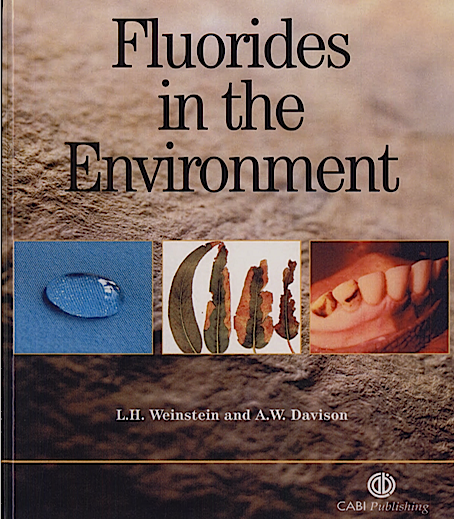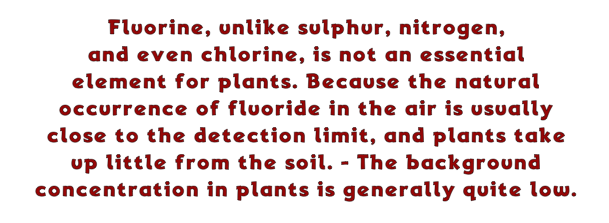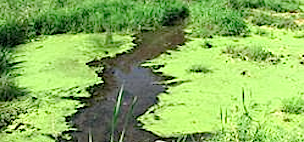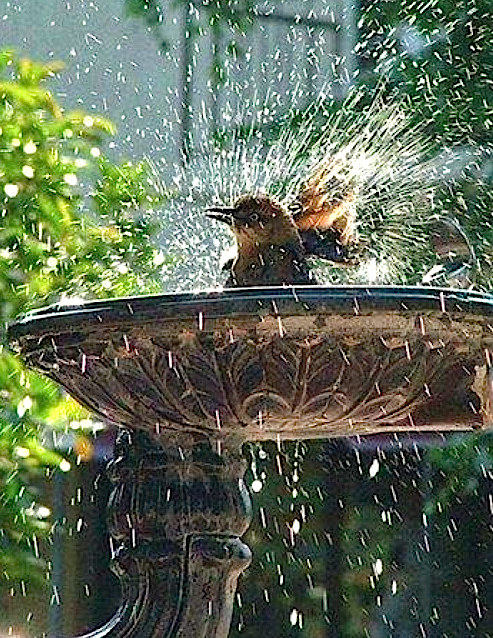FLUORIDES AND PLANTS +
According to the U.S. Department of Agriculture,
“Airborne fluorides have caused more worldwide
damage to domestic animals than any other air pollutant.”
Most Damage Payments Are “Out-of Court” Settlements.
~ FLUORIDE AND PLANTS ~
Some Plants Are Very Sensitive to Fluoride Damage
Fluoride is considered to be the most phytotoxic pollutant and susceptible plant
species can be injured at ambient concentrations of about 0.8 pg F m4
(Weinstein and Alcsher-Herman, 1982).
Our List – Not Comprehensive
Alstroemeria, | Apricots, | Aspidistra spp., | Calathea and Maranta spp., | Chamaedorea elegans, | Chiorophytum comosum Spider Plant, | Citrus, | Cordyline terminalis Good Luck Plant, | Corn, | Chrysanthemums, | Daylilies (Hemerocallis), | Dracaena spp., | Gibasis pellucida Tahitian Bridal Veil, | Gladioli, | More on Gladioli, | Grapes, | Howea forsterana, | Lilium spp., | lichens (biomonitoring), | Mangos, | Maranta leuconeura Prayer Plant, | Maize | Olive trees, | Parlor Palm, | Peaches, | Petunias, | Pine Trees (most), | Roses, | Snapdragons, | Spathiphyllum spp ., | Tradescantia spp., | Tulips, | Yucca spp. | Horse Chestnuts
“Fluoride and Tea Drinking”
More info → HERE ← (Journal of the Air Pollution Control Association)
Some pine trees are very sensitive to fluorides and can be used
as bio-indicators for air [and water] pollution.
Some ferns and rain forest plants can show sensitivity to
…fluoride when watered on their foliage.
Fluoride-induced injury (air pollution) to coniferous forests can occur at a distance of 32 km from an emitting source, and total destruction of some species at 13 km distance. Fluorides are released into the air in both a gaseous state (as hydrogen fluoride and silicon tetrafluoride) and in solid particles. The particles fall on, and the gases are absorbed by, vegetation near the polluting industry [or volcano]. If this vegetation includes forage crops, which are fed to cattle, sheep, horses, pigs, or kangaroos. (The EPA says fluoride from Alcoa’s aluminium smelter at Portland [Victoria] is making kangaroos sick. 23 Feb. 2010), serious problems can ensue, since these animals, particularly cattle are vulnerable to fluoride. In fact, according to the U.S. Department of Agriculture, “Airborne fluorides have caused more worldwide damage to domestic animals than any other air pollutant.”
[See also: Fluoride Injury Symptoms In Epiphytic Lichens And Mosses → HERE ]
See more further down this page.
Huge compensation payments have been made, – mostly as ‘Out of court settlements‘.
❝ The thing to note with plants is that plants will readily absorb fluorine that is sprayed [(irrigation,) or falls] on the leaves. If flood [or drip] irrigation is used, the plants accumulate far less fluoride due to calcium absorption in the soil and the plant’s discriminatory uptake through the roots ❞
– Dr. Miller.
↓ Extract from research paper
Q. If crops are grown [in soil] where there is fluorine contamination do they take up the fluorine and pass the trouble on to somebody else ?
A. [R. Allcroft] No, it is not a case of passing it on to somebody else. It has been shown that most plants do not take up fluorine from the soil. There are exceptions: the tea plant and the camellia which appear to be fluorine collectors. Most grasses and root crops do not take it up from soils. It is mostly a question of contamination of the surface, there-fore humans get off lightly because we do not eat grass. The inner parts of cabbages and similar crops are not high in fluorine, only the outer coverings which are removed. Cereal grains are also quite safe…
Fluorine Toxicity in Plants
…The mechanism by which these produce this
fluorinated compound is not yet known…
Dichapetalum cymosum
HERE and HERE
Recommended, very comprehensive.
CARING FOR CUT FLOWERS
Fluoride damage from city tap water is best avoided especially for rose buds.
Flowers should be placed in clean fluoride free water IMMEDIATELY after cutting.
Bougainvillea flowers WILL last in water only if this is done,
and the ends of the stalks are smashed.
SOME EFFECTS OF INORGANIC FLUORIDE
ON PLANTS, ANIMALS AND MAN
Faculty Research Lecture
No 151956
35 Pages PDF — Utah University
FLUORIDE ACCUMULATION BY VEGETATION IN THE VICINITY
OF A PHOSPHATE FERTILIZER PLANT IN TUNISIA
Russian Fluoridation Research
Fluoride Concentration of Soil and Vegetables in Vicinity of Zinc Smelter…
‘ FLUORIDES IN THE ENVIRONMENT ’
by
L.H.Weinstein and A.W. Davison
Fluoride content of edible Plants
We thank you for this large and comprehensive file ↓
fluoride-in-soil-and-plants-1996-stevens
EXTRACT:
Fluoride is one of the most common airborne pollutants and its phytotoxicity is well known.
Major sources of ai¡borne F. pollution are brickworks, aluminium smelters and phosphate
fertiliser factories. Fluoride is also an impurity in phosphatic fertilisers (2-3Vo) and
this is the major source of F. contamination in agricultural soils. Until recently F.
added to the soil was considered to adsorb strongly to the soil and therefore
was unavailable to the plant. However, some recent studies in agricultural
and industrial situations have shown increases in water extractable
F. in soils, which could be potentially available to the plant.
Fluoride is considered one of the most
toxic inorganic pollutants.
Literature Review ↓
Fluoride and Plant Life
Plants and Foods Containing Fluorine – Dr. Olree
⇒ FLUORINE AND FLUORIDE. ⇐
INTERNATIONAL PROGRAMME ON CHEMICAL SAFTY (IPCS)
Extract:
Page 46 of 136
-
EFFECTS ON PLANTS AND ANIMALS
Plants are exposed to fluoride in the soil, and in the air as a result of volcanic activity, natural fires, wind-blown dusts, pesticides or as emissions from processes in which fluorine-containing materials are burned, manufactured, handled, or used (US NAS, 1971).
The main route of entry of fluoride into animals is by ingestion, so plants are important vectors of the element in all ecosystems…
It is well known that industrial installations producing bricks,
phosphate fertilizers, and glass, along with coal-fired power
stations and aluminium smelters, are the most important
sources of gaseous and particulate fluoride pollution,
as well as volcanoes.
LICHENS – In the vicinity of an aluminum factory, lichens accumulated 400–600 μg F/g of dry weight (as compared to less than 10 μg/g in un- contaminated regions) [40]. The symptoms of toxic fluoride action include chlorosis, necrosis, weakening and loss of thalli binding to rocks and tree bark. The most sensitive to fluoride are fru- ticose lichens, whose survival decreased to 1% for 4 years of observations. The majority of foliose lichen species also lost up to 88% of biomass, whereas crustose lichens were the most resistant to fluoride action and gradually occupied areas of dying lichens of other species.
→ MOUNT ETNA & FLUORIDE ←
The analysis of fluorine content in Etnean vegetation focused on two of
the most widespread tree species in the area: Chestnut (Castanea Sativa) and
Pine (Pinus Nigra). Pine were generally of the subspecies Laricius (Corsican Pine), the
subspecies Austriaca (Austrian Pine) was sometimes used (where Laricius was absent).
[ ‘Plants Of The Bible’ is not fluoride related. ]
plants-of-the-bible-lower-res
Blue-green algae increased by the use of glyphosate.
We all need clean water to bath in!

















